Dialogues with the Machine
Josephine Berry meets the Veterans of landmark exhibition cybernetic serendipity...
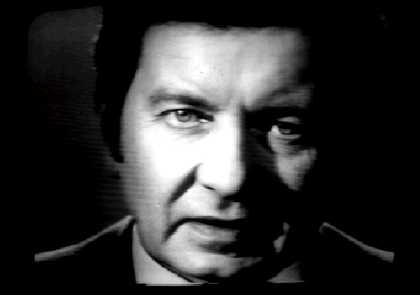 What more proof is needed to convince us that history is constituted in the present than the ICA's recent conference Dialogues with the Machine during which history was made flesh? For an intensive two day period artists, theorists and activists who helped - the word is unavoidable - 'pioneer' the electronic art movement gathered like ghostly spectres in the darkened rooms of the institution. The seance attempted to summon up the ICA's 1968 exhibition Cybernetic Serendipity - the first in the UK to explicitly chart artists' work with computers - but also the more extended early electronic art landscape. These histories were (inevitably) examined from today's context of global digitalism. As is appropriate to the constitution of history, which must necessarily be partial and incomplete, only a handful of the artists and theorists who participated in the 1968 show were present. Rapidly, what might initially have seemed like a very specific historical focus triggered dialogues far more diverse than those relating to the machine alone.
What more proof is needed to convince us that history is constituted in the present than the ICA's recent conference Dialogues with the Machine during which history was made flesh? For an intensive two day period artists, theorists and activists who helped - the word is unavoidable - 'pioneer' the electronic art movement gathered like ghostly spectres in the darkened rooms of the institution. The seance attempted to summon up the ICA's 1968 exhibition Cybernetic Serendipity - the first in the UK to explicitly chart artists' work with computers - but also the more extended early electronic art landscape. These histories were (inevitably) examined from today's context of global digitalism. As is appropriate to the constitution of history, which must necessarily be partial and incomplete, only a handful of the artists and theorists who participated in the 1968 show were present. Rapidly, what might initially have seemed like a very specific historical focus triggered dialogues far more diverse than those relating to the machine alone.
The presence of former Artist Placement Group's co-founder Barbara Steveni (now Organisation and Imagination, or O I), as well as social interventionist artists like David Hall and Stephen Willats, steered the event away from any narrow reading of electronic art's history. These artists and activists explained their investigations of the machine as one point of engagement within a far broader spectrum of concerns. This relativist position was most forcefully stated when David Hall, whose deconstructive series 'TV Interruptions' was spectacularly broadcast by Scottish Television in the 1970s (the first ever artist's TV broadcast in the UK), declared his total lack of interest in technology. This rebel yell was accompanied by the more generalised mantra of "I'm not really sure why I'm here." Irritating as this rush to deny any profound connection with technology was, it functioned as an antidote to the sort of competitive techno-fetishism that can emerge at such events. 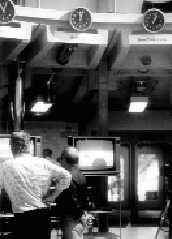 In the late 1960s and 1970s, the APG's obsession with context and sustained critique of the divisive spaces of the art world led them to secure industrial placements for artists with the (then) state-owned behemoths like British Steel and British Airways. Steveni showed images from Garth Evans's placement at British Steel, in which he photographed the totemic practice blocks of apprentice welders and then passed them off as sculpture at art colleges like St. Martin's. Projects such as these show sympathy with the Russian Constructivist reinvention of the artist as social engineer. However, unlike their forbears who supported the revolutionary politics of Communist Russia, APG saw themselves as stowaway interventionists within the state/corporate apparatus of the capitalist West. In this respect, APG prefigures some of the strategies of telecommunications art in its tactical harnessing of capitalism's superstructure without sharing net art's fascination for the technologies involved per se.
In the late 1960s and 1970s, the APG's obsession with context and sustained critique of the divisive spaces of the art world led them to secure industrial placements for artists with the (then) state-owned behemoths like British Steel and British Airways. Steveni showed images from Garth Evans's placement at British Steel, in which he photographed the totemic practice blocks of apprentice welders and then passed them off as sculpture at art colleges like St. Martin's. Projects such as these show sympathy with the Russian Constructivist reinvention of the artist as social engineer. However, unlike their forbears who supported the revolutionary politics of Communist Russia, APG saw themselves as stowaway interventionists within the state/corporate apparatus of the capitalist West. In this respect, APG prefigures some of the strategies of telecommunications art in its tactical harnessing of capitalism's superstructure without sharing net art's fascination for the technologies involved per se.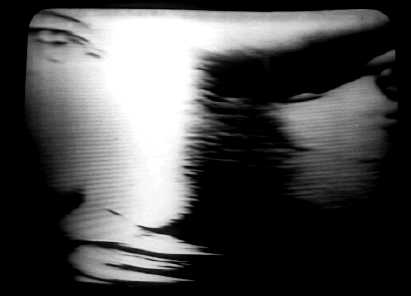 Writing about the self-interest with which we construct the past, Walter Benjamin cautions: "every image of the past that is not recognised by the present as one of its own concerns threatens to disappear irretrievably". Yet given the ubiquity of data storage in the twentieth century it is hard to contend, as Benjamin did in "Theses on the Philosophy of History", that documents of civilisation are necessarily documents of its 'victorious participants'. Although history remains the preserve of its victorious participants, when applied to the recent history of art this argument needs refinement. The dematerialisation of the artwork as a strategy for bypassing its commodity status, as well as freeing it from the problems associated with origin, hold powerful sway within the contemporary discourses and institutions of art. Interestingly, Dialogues with the Machine revealed a disparity between the historical requirement of material documentation and the contemporary currency of a non-commodifying art practice.
Writing about the self-interest with which we construct the past, Walter Benjamin cautions: "every image of the past that is not recognised by the present as one of its own concerns threatens to disappear irretrievably". Yet given the ubiquity of data storage in the twentieth century it is hard to contend, as Benjamin did in "Theses on the Philosophy of History", that documents of civilisation are necessarily documents of its 'victorious participants'. Although history remains the preserve of its victorious participants, when applied to the recent history of art this argument needs refinement. The dematerialisation of the artwork as a strategy for bypassing its commodity status, as well as freeing it from the problems associated with origin, hold powerful sway within the contemporary discourses and institutions of art. Interestingly, Dialogues with the Machine revealed a disparity between the historical requirement of material documentation and the contemporary currency of a non-commodifying art practice.
The historical figure of Lillian Schwartz, who is known for the experimental computer animations which she developed during her thirty year career at Bell Laboratories, came equipped with a professionally edited showreel of her life's work. Her early films such as Pixellation explore, in purely abstract terms, the texture of computer generated imaging. The matrix of the pixellated screen becomes the realm of an aesthetic play of form, colour and rhythm. The 'innocent' pleasure such work takes in the medium is almost unimaginable to contemporary viewers. The total abstraction of these eulogies to the machine excludes all obvious reference to their social effects. As such they seem to inhabit a far more remote past than the socially critical projects of contemporaries like APG. In the age of global information capitalism the abstractions of Schwartz's early films make us re-encounter computer technology afresh without the sociology which inflects later electronic artwork. However, for contemporary viewers the innocence of Schwartz's relationship to the computer (compounded by gushing remarks like: "I just love my computer; I can go anywhere and see anything with it!") fits all too snugly with the industry's own peachy-creamy rhetoric. Schwartz came across as one of history's material victors, if not a triumphant hussar in the history of critical thinking.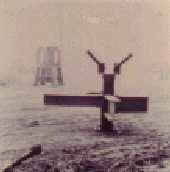 In a stroke of brilliance, the conference staged the convergence of such disparate artists as Robert Adrian, one of the fathers of telecommunications art, with those metaphysicians of 'old media' Anish Kapoor and John Latham. During a crucial discussion between Kapoor and Latham entitled "Event Structured Universe", concepts such as the 'least extended/nonextended state' (which introduces the dynamics of art as distinct from the dynamics of science, physics and psychology) and the 'auto-generated object' were explored as means of describing their common interest in reducing the artistic gesture to one which could be seen as just another component within the physical universe - as presentation, not representation. Kapoor touched on his interest in the poetic creation of an empty space or 'void' within his work which, he explained, was necessarily doomed because "even if you clear everything away, that space only becomes filled again with all the baggage the viewer brings to it". Although never mapped directly onto the Internet and its symbolic twin, cyberspace, this discussion implied some interesting parallels.
In a stroke of brilliance, the conference staged the convergence of such disparate artists as Robert Adrian, one of the fathers of telecommunications art, with those metaphysicians of 'old media' Anish Kapoor and John Latham. During a crucial discussion between Kapoor and Latham entitled "Event Structured Universe", concepts such as the 'least extended/nonextended state' (which introduces the dynamics of art as distinct from the dynamics of science, physics and psychology) and the 'auto-generated object' were explored as means of describing their common interest in reducing the artistic gesture to one which could be seen as just another component within the physical universe - as presentation, not representation. Kapoor touched on his interest in the poetic creation of an empty space or 'void' within his work which, he explained, was necessarily doomed because "even if you clear everything away, that space only becomes filled again with all the baggage the viewer brings to it". Although never mapped directly onto the Internet and its symbolic twin, cyberspace, this discussion implied some interesting parallels.  The impossibility of Kapoor's void brought to mind the impossibility of the unviable image of the Internet as empty psycho-social vessel, a space of radical difference to the physical world. Equally, the notion of the auto-generated artwork found resonances in telecommunications artworks such as The World in 24 Hours, which Robert Adrian and Roy Ascott co-conceived in 1982 for Arts Electronica. This was an event lasting twenty-four hours in which artists from fourteen different international cities communicated using slow-scan TV, fax, computer mailbox and telephone sound. This work opened up a temporary distributed space of creativity within the lives of its participants - and the global telecommunications networks - a space which took on the contingent qualities of its environment and participants.
The impossibility of Kapoor's void brought to mind the impossibility of the unviable image of the Internet as empty psycho-social vessel, a space of radical difference to the physical world. Equally, the notion of the auto-generated artwork found resonances in telecommunications artworks such as The World in 24 Hours, which Robert Adrian and Roy Ascott co-conceived in 1982 for Arts Electronica. This was an event lasting twenty-four hours in which artists from fourteen different international cities communicated using slow-scan TV, fax, computer mailbox and telephone sound. This work opened up a temporary distributed space of creativity within the lives of its participants - and the global telecommunications networks - a space which took on the contingent qualities of its environment and participants.
Douglas Davis, who wrote the 1973 classic Art and the Future, sounded a note of temporal collapse when he claimed at the outset of the conference: "The future is now, not tomorrow anymore". Although Davis was partly referring to the accelerated speed of technological development which has "converted Science Fiction into Science Fact", he also referred to the idea that the (always unpredictable) future is only ever a figment of our present. Between Davis's and Benjamin's theorising, in which past and future become effects of the present, we arrive back at John Latham's notion of the 'least extended/nonextended state. But with the equalising effects of digital data storage and in particular the Internet, it seems possible that the present will become an increasingly extended state as historical documents comprise just another node within the digital 'rhizome'. Having said that, if the artefactual landscape is flattening out in this digital respect, the rogue element of 'historical figures' will always create disequilibrium; their accounts of the past fluctuating in accordance to the present in ways which contradict the artefactual remains. Looked at in this way, it seems wrong to regard net art or telecommunications art as occupying a more unstable position within our historical economy. Perhaps the persistence of digital information, in contrast to the instability of carbon-based entities, will ultimately undo the historical precedence of materiality over immateriality.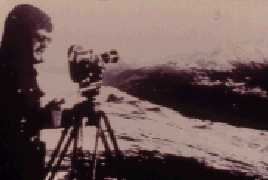
Josephine BerryXjosie AT metamute.comX
Mute Books Orders
For Mute Books distribution contact Anagram Books
contact@anagrambooks.com
For online purchases visit anagrambooks.com







